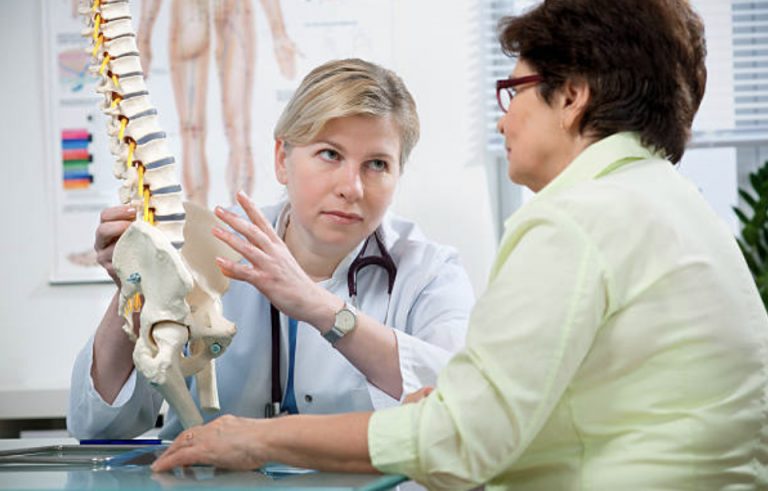What is Osteoarthritis
Osteoarthritis is one of the most common causes of spinal stenosis, according to the American College of Rheumatology. Further research shows that osteoarthritis affects up to 30 million Americans, making it the most prevalent form of arthritis. In fact, medical experts predict that, by 2030, 20% of all Americans will be at risk for developing osteoarthritis, and, as result, they also will be at risk for developing spinal stenosis.
Generally speaking, osteoarthritis is a spine condition that comes with age. So, if you’re experiencing the pain and stiffness of aging, or if you have received a diagnosis of osteoarthritis and/or spinal stenosis, it’s important to understand how these spine conditions occur, how they are related, and what their symptoms are, and what treatments are available.
Defining Osteoarthritis and Spinal Stenosis
Medical experts define each condition as follows:
Osteoarthritis: A degenerative disease that affects the weight-bearing joints, including the hips, knees, feet, and the joints of the spine. The word osteoarthritis derives from “osteo,” which means bone, and “arthros,” which means a joint and its attachments.
Spinal Stenosis: A narrowing or constriction of the nerve passageways in the spine, often caused by age-related spine conditions like osteoarthritis, degenerative disc disease, and herniated discs.
Moreover, both spine conditions are related to general wear of the human body that happens with age. The spine is especially vulnerable because it has to support the weight of the upper body while being able to bend and flex for basic movement. The joints of the spine are protected by cartilage and lubricating synovial fluid to enable smooth motion.
Over time, the protective cartilage between joints wears out, and bone starts to rub against bone, causing inflammation and other symptoms. The result of osteoarthritis is pain, inflammation, and the development of outgrowths known as bone spurs, or osteophytes. Bone spurs can grow on just about any joint, including on the facet joints, which are the joints of the spine. If bone spurs cause a narrowing of the spinal canal or a nerve root exit and put pressure on nerve roots, it is identified as spinal stenosis.
Osteoarthritis and Spinal Stenosis Treatment
Osteoarthritis or spinal stenosis does not affect everyone. But, as you age, you may want to consider some lifestyle changes. Such as getting regular exercise, maintaining a healthy weight, using proper body mechanics, and assuming a better posture can promote healthier joints. These lifestyle changes will slow the development of either condition.
However, if you are diagnosed with spinal arthritis or spinal stenosis, most doctors recommend treating symptoms with conservative, nonsurgical methods. These may include:
- Nonprescription anti-inflammatory medications
- Prescription pain medication
- Back bracing
- Low-impact exercises such as walking or swimming
- Weight loss
- Epidural steroid injections
- Surgery
If your spinal stenosis symptoms have become persistent and are restricting your work, lifestyle, and ability to spend time with your family, you and your doctor may start to explore surgery. Generally, traditional open back surgery typically involves a large incision, overnight hospitalization, and a lengthy recovery time.
At BEST Health System, we offer minimally invasive outpatient procedures that are alternatives to traditional open spine surgery. Our procedures use a less than 1-inch incision to access the spine. This helps our patients avoid hospital-associated costs and a lengthy recovery period.
BEST Health System
If you’re living with spinal stenosis in the upper spine and searching for relief, consider BEST Health System for help. Our multidisciplinary team will you develop a care plan necessary to reach your treatment goals and achieve lasting relief.
